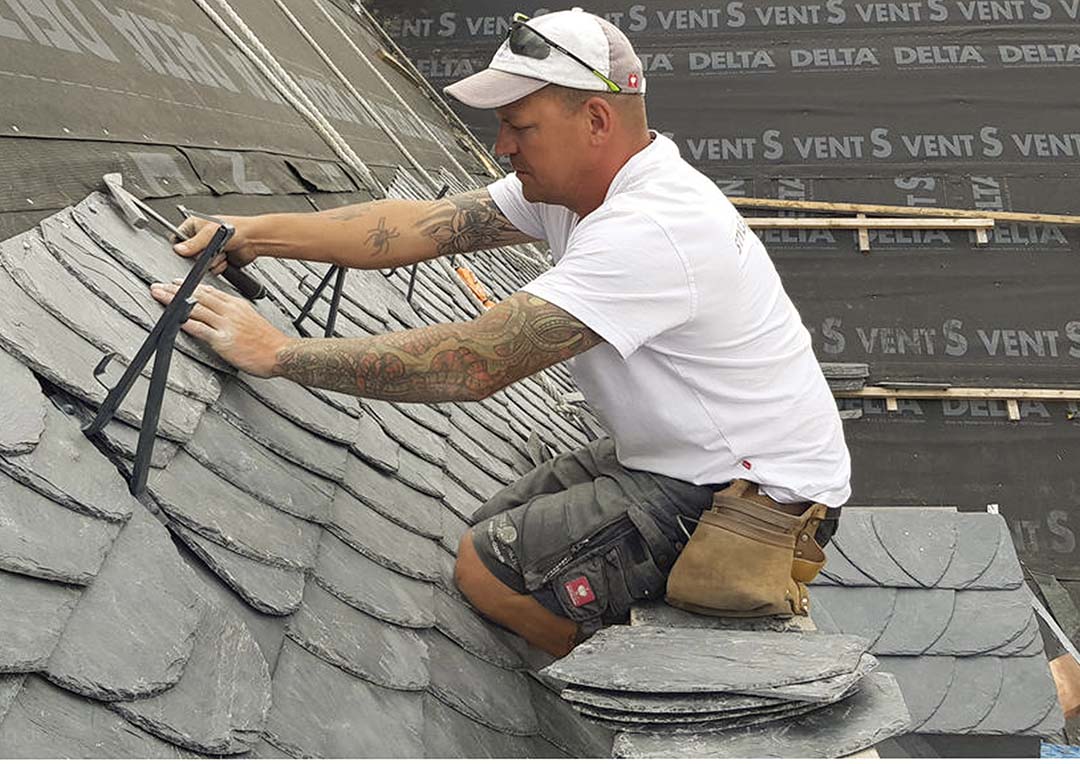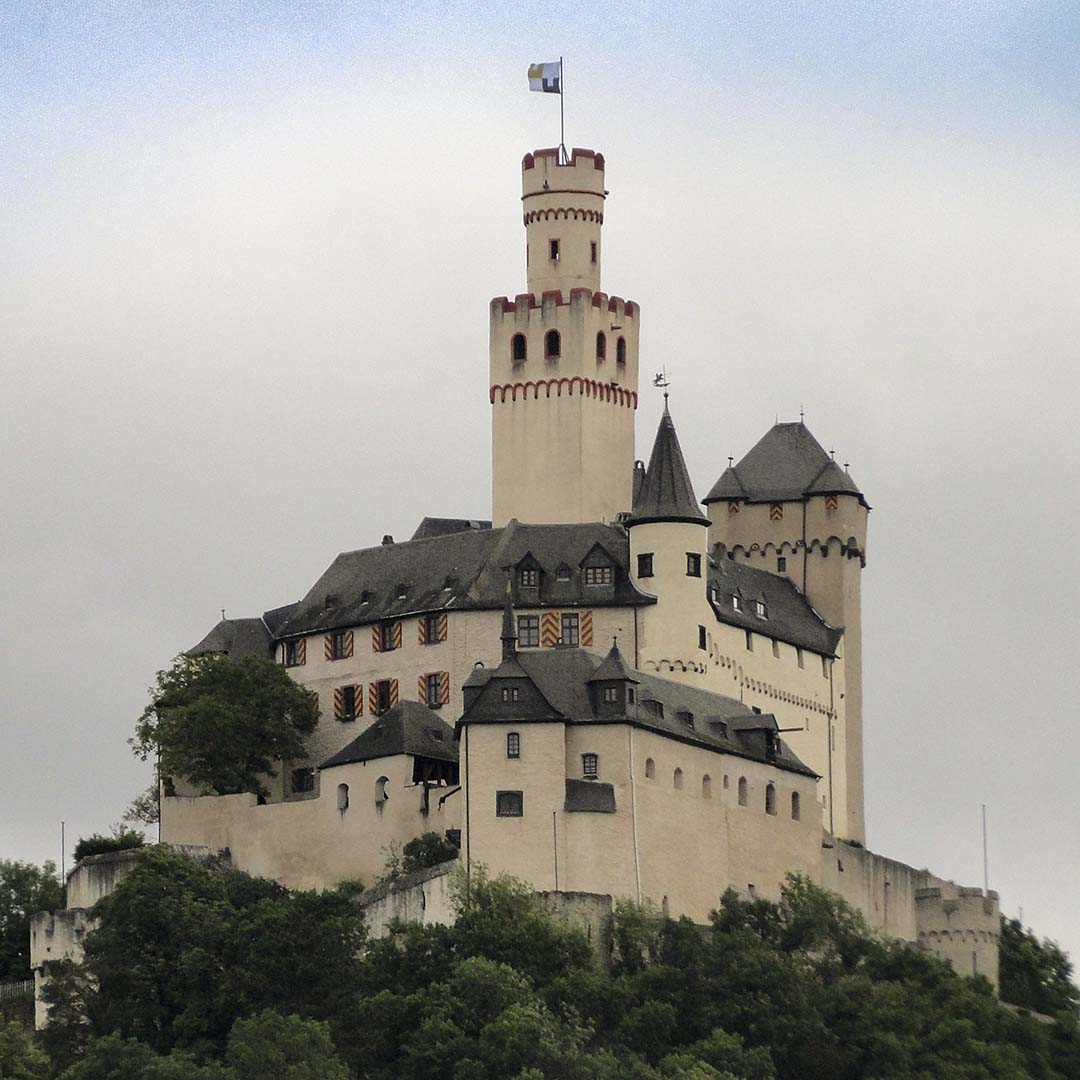
Old Town Bamberg (Lower Devonian slate)
Year designation
Lithology
Aesthetics
Geological settings
Paleozoic – Ordovician to Lower Carboniferous; Phycodenschiefer-, Griffelschiefer -, Hunsrückschiefer- Wissenbach s.l. – and Culm Formation (478 – 345 million years).
Location
Rhenish Slate Mountains to the Harz Mountains, S Thuringia/Saxony and NE Bavaria, Germany.
Old Town Bamberg (Lower Devonian slate)
Traditional craft shaping cultural landscapes
The use of the German Roofing Slate dates back to Roman times. Excavations on the Katzenberg near Mayen uncovered a late Roman fortification (around 300 AD). The finds allowed a reconstruction of the round towers with roofs that were already similar to the “Altdeutsch” (English: Old German) that is common today. As early as Roman times, however, further transport on cargo ships across seas and rivers took place, such as slate finds on shipwrecks in the river Rhine near Nijmwegen/ Netherlands.
From the Middle Ages and after, slate roofing was the basis for craftsmen’s guilds in many cities. This is how special “Leyendecker-Zünfte” (English: slate roofers guilds) came into being in World Heritage cities such as Trier (around 1100), Goslar (around 1300) and Cologne (1397). In the tradition of the medieval slate guilds, today’s roofer schools and training are run by the craft and not by the state. The (slate) roofing schools were actively supported from the start by the neighboring slate companies: Mayen near Katzenberg and Altlay, Eslohe near Magog/Bad Fredeburg, Lehesten in Thuringia near the border with Bavaria.
The German slate was used in Central Europe in the world’s unique German shed forms, often on UNESCO World Heritage Sites: The Roman Upper German-Raetian Limes, watchtowers and associated forts (from 9 AD)(Rhineland-Palatinate, Hesse, Baden-Württemberg), Roman Monuments, Cathedral and Church of Our Lady in Trier (Rhineland-Palatinate), Regensburg Old Town (since Roman times), Abbey of Lorsch (774 AD)(Hesse), Aachen Cathedral (803 AD)(North Rhine-Westphalia), Goslar (first mention 979 AD)(Lower Saxony), Hanseatic City of Lübeck (from 1143 AD)(Schleswig-Holstein), Bamberg Old Town (from 1007 AD)(Bavaria), Würzburg Residence (baroque period)(Bavaria), Castles of Augustusburg and Falkenlust (baroque period) at Brühl (North Rhine-Westphalia), Palaces and Parks of Potsdam (e.g. Fortuna portal 1701, blown up in 1960, rebuilt in 2001)(Brandenburg),Margravial Opera House Bayreuth, 18th century (Bavaria), Speicherstadt in Hamburg (19th century), Slate roofs on Luther memorials in Eisleben and Wittenberg (Thuringia), Classical Weimar (e.g. slate-roofed Anna Amalia Library)(Thuringia); otherwise: Round towers of the Roman fortifications on the Katzenberg near Mayen (around 300 AD)(Rhineland-Palatinate), Marksburg in Braubach/Rhine (12th Century)(Rhineland-Palatinate), a copy of the Marksburg on the island of Miyako-jima (Japan), Grote of Sint-Vituskerk in Naarden, tower 1380, basilica between 1455 and 1518 (Netherlands), Military Governor’s Palace Metz 1905 (Lorraine/France).
- Main publication
A main publication is currently in progress.
- Author(s)

